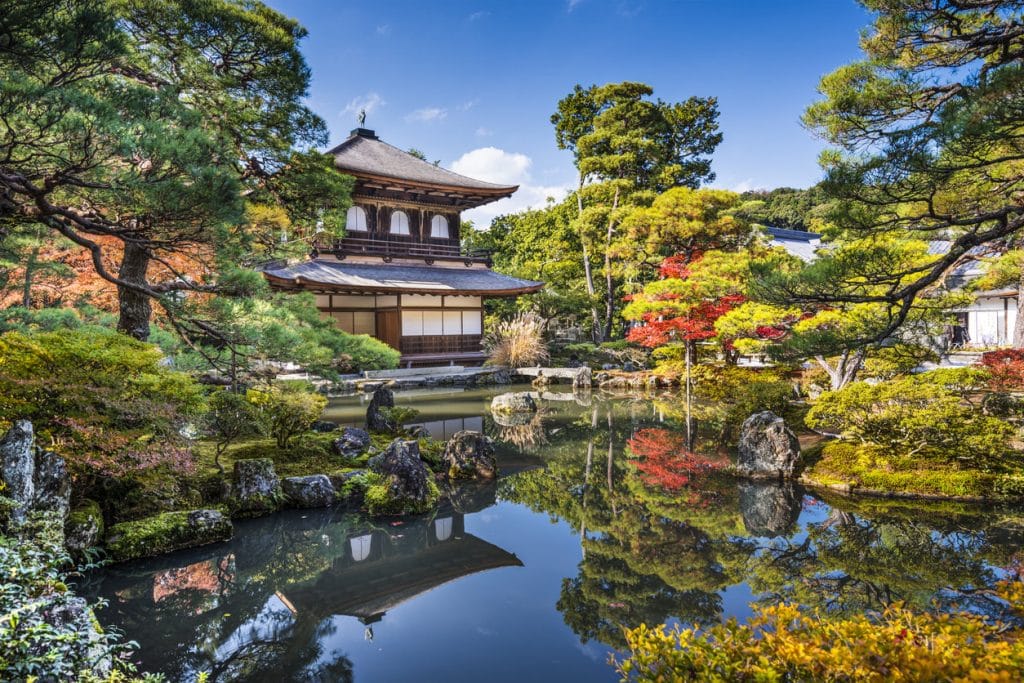Meiji Jingu Shrine, Tokyo

Meiji Jingu, with its magnificent wooden torii door, is the most popular shrine in the city: this may very well be due to the 100,000 trees surrounding this temple in the center of metropolitan Tokyo. It is impossible not to feel the power and the peace of the forest, with 365 types of trees. The shrine was completed and dedicated to Emperor Meiji and Empress Shoken in 1920. Extremely photogenic, the colorful barrels in the shrine’s garden are gifts both from and to the people.
Sensō-ji Temple, Tokyo

The venerable Sensō-ji Temple is a major destination for visitors from all over the world. The extraordinary origin story of this Buddhist temple is a fish tale: two fishermen on the river netted a golden figure rather than a fish. Although they threw the figure back into the water, it kept coming back. Thus, a temple was built on the same site in 628, dedicated to Kannon Bosatsu, the Bodhisattva of compassion. The original structure was destroyed during World War II, but rebuilt. There are also stalls selling local snacks, clothing and souvenirs along the lane leading to the temple near Asakusa.
Kiyomizudera Temple, Kyoto

This special temple has an evocative name: Kiyomizudera is “pure water” in Japanese. Just 15 minutes from the Kyoto city center, the Temple, founded in 780, is surrounded by lush trees and pink cherry blossoms. Set against the waterfall that gave Kiyomizudera its name, this serene Temple is on the list of UNESCO world heritage sites and is associated with one of Japan’s oldest schools of Buddhism. Visitors can drink the waters that pour down but go easy – drinking too much is considered a sign of greed!
Kinkaku-ji Temple, Kyoto
Japan’s most eye-catching temple, Kinkaku-ji, is also known as the Golden Pavilion: Its top two levels are covered in pure gold leaf. Built in the 14th century, the lakeside Zen Buddhist temple shines like the sun amid the forest. The view is so spectacular – especially against the white snows of winter – that visitors come from all over the world to enjoy it.
Jishō-ji Temple, Kyoto

After gold, there’s silver! Modelled after the Golden Pavilion, Jishō-ji – also known as Ginkaku-ji, the Temple of the Silver Pavilion – was originally built in the 15th-century by a retired shogun as a retirement villa. Set in the foothills of the Kyoto Mountains, the Zen temple, once covered in black lacquer, is believed to have acquired its name from its silvery appearance when lit by the moon. It also features a formal Japanese garden.
Tenryū-ji Temple, Kyoto

Tenryū-ji, one of Japan’s most important Zen temples, is a modest structure surrounded by woodland. Built in the 14th century by shogun Ashikaga Takauji, the Temple was dedicated to the Emperor, with whom Takauji had had a falling out, to appease his spirit. While many of the original buildings were destroyed by fires or wars, the beautiful landscaped gardens survive.
Toji Temple, Kyoto

Featuring a five-story pagoda – the tallest in Japan – Toji Temple was built in 796 in Kyoto, at that time the capital of the empire. A 15-minute walk from Kyoto train station, Toji is on the UNESCO World Heritage List. The Temple is the scene of dynamic and colorful festivals, including a huge market on the 21st of each month. Meaning “east” in Japanese, the Temple is an exemplary example of early Buddhist architecture and, as its name implies, it was built for the purpose of protecting the eastern side of the city.
Fushimi Inari Shrine, Kyoto
Fushimi Inari Shrine, set in the foothills of Mount Inari, is renowned for its multiple red torii gates. The Shrine was built by the Hata Clan in the 8th century, and dedicated to Inari, the Rice god; foxes are considered Inari’s emissaries and, for that reason, images and figures of foxes are prevalent throughout the complex. The two gates, standing side by side behind the Shrine, welcome visitors to a trail that ascends Mount Inari.
Stories knock at your door!
You can easily download images, and share on your social media accounts via your smartphone. Just press and hold the story, and save or share the image you have selected via the menu that appears.




